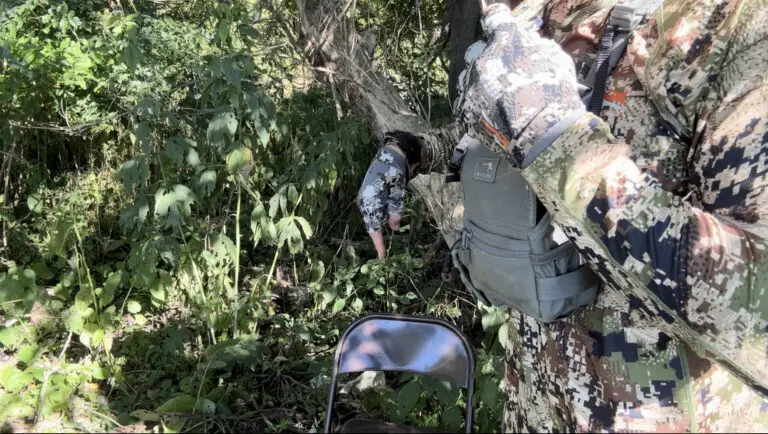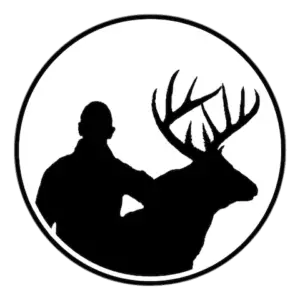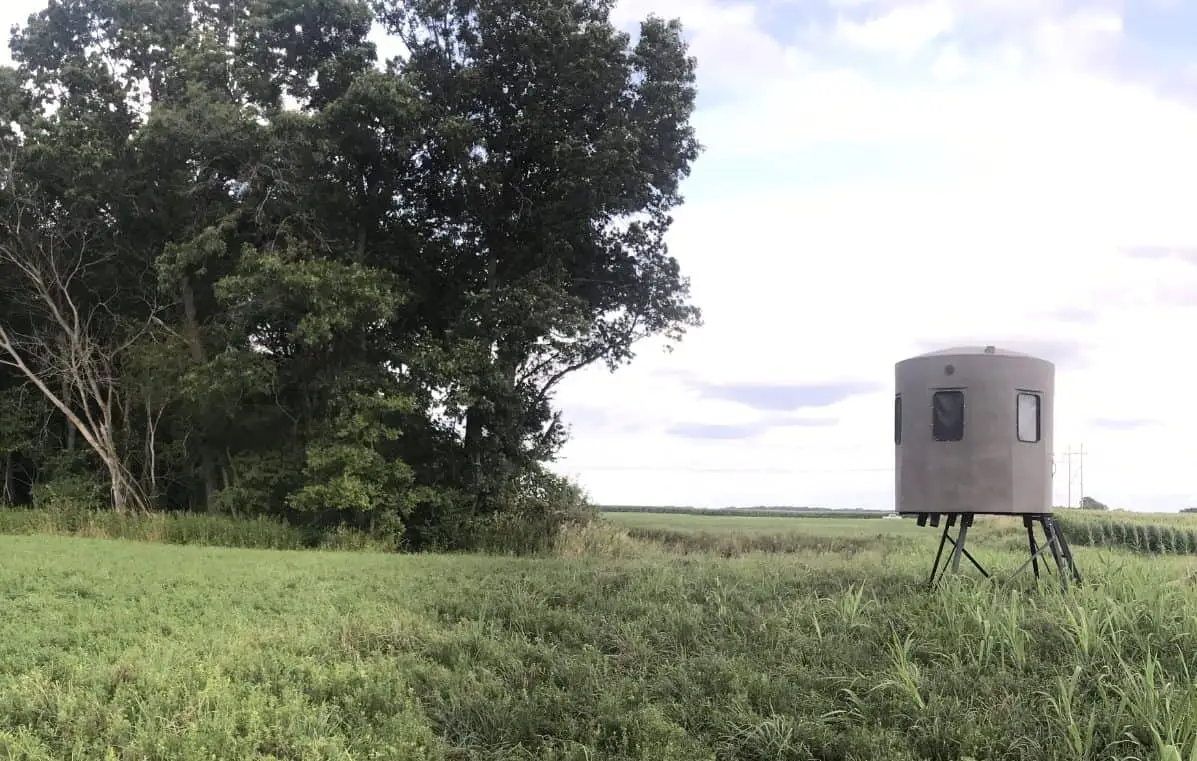There are several effective ways to kill deer. I have killed deer from the ground and from elevated positions. Even though the majority of hunters primarily use one or two methods for hunting, some of the less popular methods can be more effective at killing deer. It really just depends on your specific hunting situation.
The most effective way to hunt deer is from a hidden position that is downwind of expected deer activity. This can be achieved by hunting from fixed positions such as treestands, tripod stands, elevated platforms, tree saddles, ground blinds, and tower blinds. However, mobile hunting methods are also very effective at killing deer. These mobile methods are spot-and-stalk, still-hunting, deer drives, dog hunting, and the “bump-and-dump”.
There are many reasons why one hunting method is more effective than another in a given situation. For example, are you hunting a large piece of public ground or a small piece of private land? Public land hunters are more likely to stalk or still-hunt deer because they have more acres to work with. Large properties allow hunters to cover more ground and chase after deer wherever they go. If you have several groups of deer in different locations to hunt, spot-and-stalk might be the best hunting method for you.

Small tracks of private land can get overhunted very easily by stalking and still-hunting. Also, you can’t cover a lot of ground unless you have hunting permission from the neighbors. For small pieces of private ground I suggest hunting from treestands and blinds. This will help keep the deer using the property more regularly by keeping the hunting pressure low. If you only plan on hunting a property once or twice, you can be more aggressive with your hunting tactics.
The habitat of the land can also help you decide which hunting method to use. For example, are you hunting a thick and nasty piece of timber that provides limited shot opportunities? If so, you probably shouldn’t still-hunt or stalk deer because it will be difficult to shoot a deer if you find one.
The weather can also help you decide which hunting method to use on a specific day. Windy days can hide the noise that you make and can also conceal your movements. When the brush around you is blowing around it makes it much easier to move without being seen by deer. If there is no wind, still-hunting or stalking are not great options. Try to only still-hunt or stalk deer on windy days.
Rainy days will also make it easy to move around undetected. The sound of rain hitting the ground will cover up any noise that you make. Additionally, the wet and soft ground will make it much easier to not make any noise to begin with.
The most effective hunting method can also depend on the type of weapon you are using. Are you a bow hunter or a gun hunter? Bow hunters aren’t likely to kill a deer during a deer drive or when hunting with dogs. However, gun hunters have proven that these tactics are very effective. These hunting methods tend to be more controversial methods amongst the hunting community and may not be legal or allowed where you hunt. Make sure to check your rules and regulations.

11 hunting methods to kill deer effectively
These 10 hunting methods can be broken down into two categories: fixed position hunting and mobile hunting. Fixed position hunting is a less aggressive type of hunting than mobile hunting.
You might be wondering if fixed position hunting or mobile hunting more effective. Well, the answer isn’t straight forward. Your specific goals and hunting situation will determine the most effective way for you to hunt deer. My advice is to talk to someone that is achieving the level of success that you want to achieve for yourself and ask for their advice based on your specific situation.
1. Treestand Hunting (Most Popular)
Types of treestands: Lock-on stands, ladder stands, climbing stands
Definition: Metal platforms with a seat that attach to a tree in order to hunt from an elevated position
Use: Hang a treestand within shooting distance of expected deer movement. Hang treestand near trails, pinch points, water sources, food sources, etc. If there are good trees to hang a treestand in, then I will usually decide to hunt from a treestand rather than using one of the other hunting methods mentioned below. Treestand hunting is a great method to use if you plan on hunting the same property multiple times in a season.
2. Elevated Platforms
Definition: Wooden structures built on a tree to create a level platform to stand on
Use: Build elevated platforms in trees where you can’t hang a treestand. I don’t recommend building elevated platforms in most situations. Treestands work better than wooden structures in most situations. Treestands are usually much cheaper, quicker to set up, safer, and allow you to easily move them to a different tree if you need to move it.
3. Tri-pod Stand
Definition: A metal structure with 3 legs and a seat at the top of it. One of the legs has a ladder to climb up to the seat.
Use: Consider using tripods if you don’t have a good tree to hang a treestand in. Set them up where there is some vertical cover, like small trees, to help hide you while hunting.
4. Ground Blinds
Types of ground blinds: Hard-sided blinds, pop-up tent blinds, brush blinds (using vegetation to build a home-made blind).
Definition: Enclosed structures made out of a variety of materials, with the intent of hiding hunters within the structure.
Use: Use a blind if you don’t have a tree to hang a treestand in, or if there is not much vertical cover to conceal yourself with. Blinds are ideal for hunting over food plots and other areas where deer are likely to hang out for a little while in one spot.
5. Tower Blinds
Definition: An elevated structure or hard-sided blind that hunters can hide within. Commonly called a shooting house.
Use: Tower blinds are ideal for hunting over food plots or in locations where the wind tends to swirl.

6. Saddle Hunting
Definition: Hunting from an elevated position in a tree with climbing ropes attached to a saddle. Hunters use climbing sticks, ladders, or steps to reach the desired height in the tree and then attach a platform to stand on.
Use: Hunt with a saddle just like you would with a mobile treestand setup. This hunting method has its pro’s and con’s. I will be straight forward by saying that this hunting method isn’t used by an overwhelming amount of hunters for a good reason. Additionally, many hunters that adopt this hunting method end up giving it up. I don’t recommend this hunting method for the vast majority of deer hunters but there are some guys that swear by this hunting method.
7. Still-Hunting
Definition: Walking through deer habitat at a slow enough speed so the hunter can spot a deer before the deer sees the hunter.
Use: Still hunting should be used when you don’t care about deer getting bumped from an area and you only plan on hunting a specific area a few times during a season. This hunting method is ideal when hunting a large tract of public land. Try to only still-hunt on days that are somewhat windy or when the ground is wet so that you can move around quietly and stay undetected.
8. Spot-and-Stalk
Definition: This is when a hunter sees a deer and tries to sneak up to it and get within shooting range.
Use: Spot-and-stalk hunting is very popular in western states where there is wide open country and you can see deer from far distances. Many guys will use a spotting scope or binoculars to locate deer and then strategize how to sneak up on the deer for a shot. Spot-and-stalk hunting can also be effective in more wooded areas. For example, if you are hunting in a tree stand and see a deer bed down out of shooting range, you might decide to climb down and try to stalk the deer.
9. Deer Drives
Definition: Two or more hunters that work together to intentionally bump deer with the hopes that they pass in front of one of the hunters for a shot.
Use: This method of hunting is primary used by gun hunters. Archery equipment is not recommended for this hunting method. Deer drives are a very popular way of hunting during gun seasons in many states. Deer can be intentionally bumped in a variety of ways (wind bump, talking, walking slow, walking fast, etc.). Use this tactic if you don’t care about deer getting bumped from an area and you only plan on hunting a specific location a handful of times.
10. Dog hunting
Definition: Using dogs to bump deer and steer them towards a hunters position.
Use: This method of hunting is primary used by gun hunters. Archery equipment is not recommended for this hunting method. Dog hunting is illegal in many states so check your regulations before hunting with dogs. Use this tactic if you don’t care about deer getting bumped from an area and you only plan on hunting a specific location a handful of times.
11. Bump and dump (Mobile hunting)
Definition: Walking through deer habitat until you bump a deer and then you set up to hunt over the spot where the deer was at when it was bumped in hopes that the deer will return to the same spot.
Use: This is an effective hunting method when it happens organically. If you bump a deer on accident then you might want to try to implement this hunting tactic. The odds of a deer returning to the same spot soon after it was bumped is not very high. However, hunters have had success with this tactic on smart old bucks, so it does work. It’s not recommended to go into the woods with this tactic as your primary hunting method.

Conclusion
There are several effective ways to kill deer. However, the challenge is deciding which hunting method is going to be the most effective for your specific situation and goals. Even though you might only use one of these hunting methods the majority of the time, it’s important to know when to change up your strategy based on changing conditions.
Be flexible and willing to change your hunting strategy if you aren’t seeing the results that you want. This is important so that you don’t get stuck doing the same thing over and over, seeing the same result. That’s insanity!




